Table of Contents
International Symposium on Shree Anna and Woman Farmer 2025
Odisha once again reaffirmed its leadership in India’s millet revolution as the International Symposium on Shree Anna & Woman Farmer 2025 unfolded at the State Convention Centre, Lok Seva Bhawan, Bhubaneswar. The two-day event, organized under the banner of the Shree Anna Abhiyan (formerly Odisha Millets Mission), brought together global leaders, policymakers, scientists, and farmers to celebrate the transformative journey of millets — the ancient grains now leading the way toward nutrition, sustainability, and women-led agricultural empowerment.
A Proud Day for Odisha – Celebrating Mandia Dibasa
November 10 marked a historic day as Odisha celebrated Mandia Dibasa (Millet Day) — the first and only state in India to officially recognize a day dedicated to millets. The celebration was graced by Shri Shivraj Singh Chouhan, Hon’ble Union Minister of Agriculture and Farmers’ Welfare and Rural Development, who lauded Odisha’s remarkable leadership in translating the vision of Shree Anna into a people’s movement.
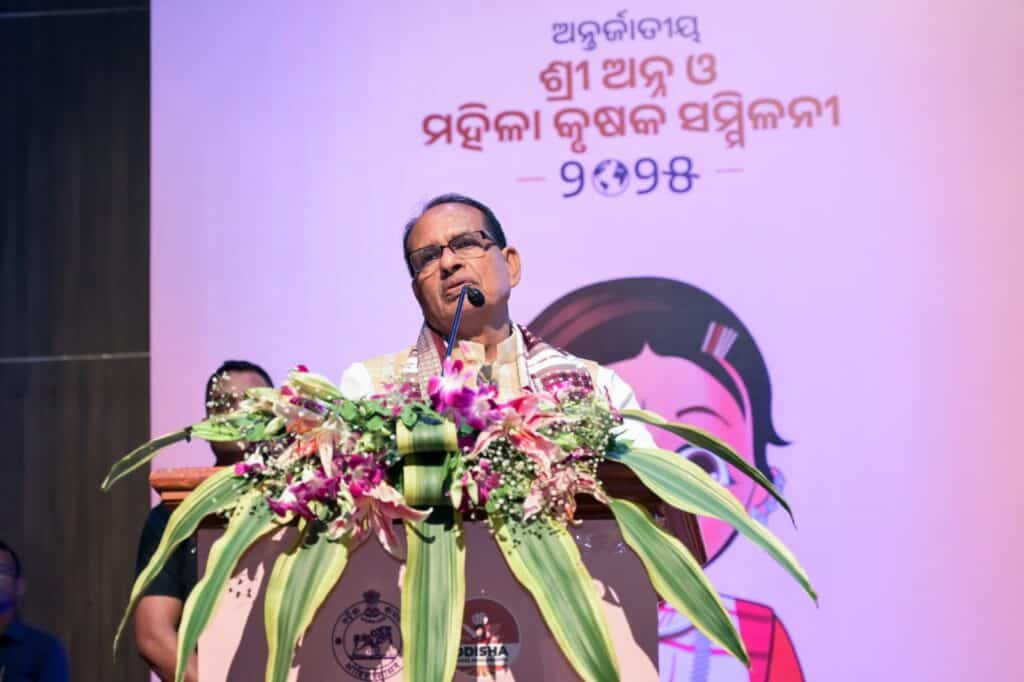
“Mandia Dibasa is not merely a day of celebration; it represents a meaningful campaign to promote Shree Anna,” said Shri Chouhan. “Odisha has shown the way for the entire nation — millets nourish both the body and the planet.”
In his address, he emphasized that millets symbolize nutrition, water conservation, and ecological balance — critical elements for a sustainable future. He also encouraged integrating millets into public nutrition programs like mid-day meals and setting up millet outlets in all government departments.
Chief Minister’s Vision for Farmers and Nutrition
Welcoming global delegates, Shri Mohan Charan Majhi, Hon’ble Chief Minister of Odisha, highlighted that farming remains the backbone of Odisha’s economy. Under the visionary guidance of Prime Minister Shri Narendra Modi, several agricultural missions have been implemented to improve the lives of millions of farmers across India.
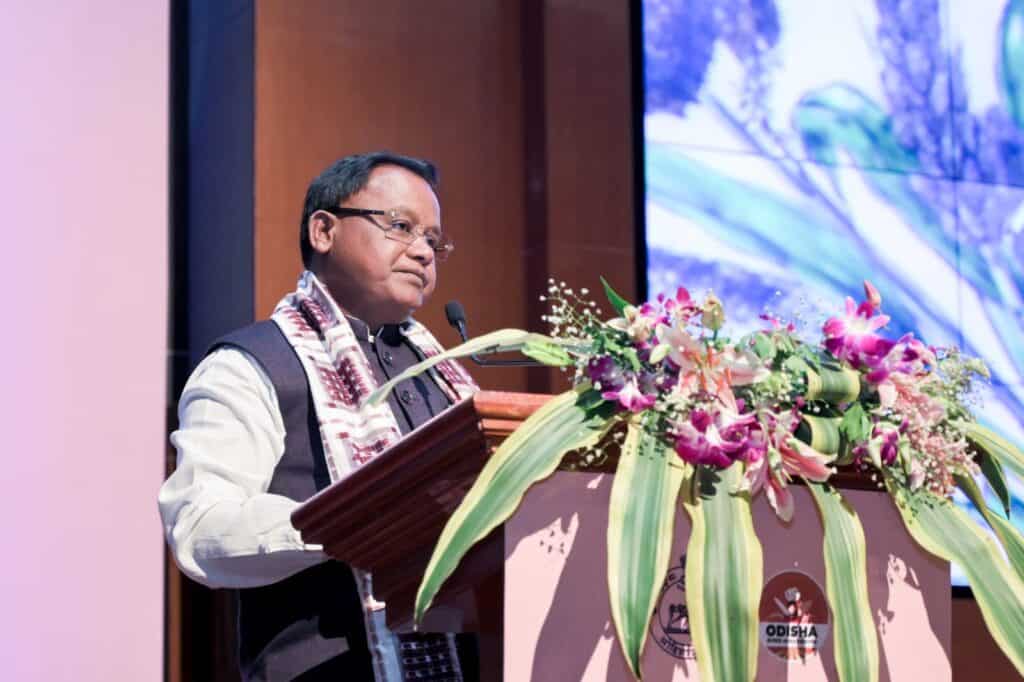
“Millets are rich in nutrients, healthy, and delicious. Through the Millet Mission, Odisha’s small and women farmers are progressing rapidly,” said Shri Majhi, reiterating the government’s commitment to farmer welfare and nutrition security.
The Chief Minister also released several key publications (Millet Foundation Guide & SOP on Seed System for Landraces and Traditional Varieties) during the ceremony, reflecting the growing body of research and innovations surrounding millet-based systems in Odisha and beyond.
Global Voices Unite for Shree Anna
The symposium brought together an impressive line-up of distinguished guests and experts from across the world, including:
- Dr. Yvonne Pinto, Director General, International Rice Research Institute (IRRI)
- Dr. Soumya Swaminathan, Former Chief Scientist, World Health Organization, and Chairperson, M.S. Swaminathan Research Foundation (MSSRF)
- Ms. Elisabeth Faure, Country Director, World Food Programme, India
- Dr. Arabinda Kumar Padhee, Principal Secretary, Department of Agriculture & Farmers’ Empowerment, Odisha
- Dr. Standford Blade (Deputy Director General – ICRISAT)
- Padmashri Sabarmatee, Custodian Farmer and Woman Leader in Natural Farming
Their participation underscored the growing global recognition of Odisha’s contribution to promoting climate-resilient, nutrition-focused agriculture.
Spotlight on Women Farmers: The Heart of the Millet Movement
The theme “Shree Anna and Woman Farmer” placed women at the center of this agricultural transformation. The symposium celebrated women farmers not merely as beneficiaries but as leaders and innovators — preserving traditional varieties, managing seed systems, and driving community-level nutrition initiatives.
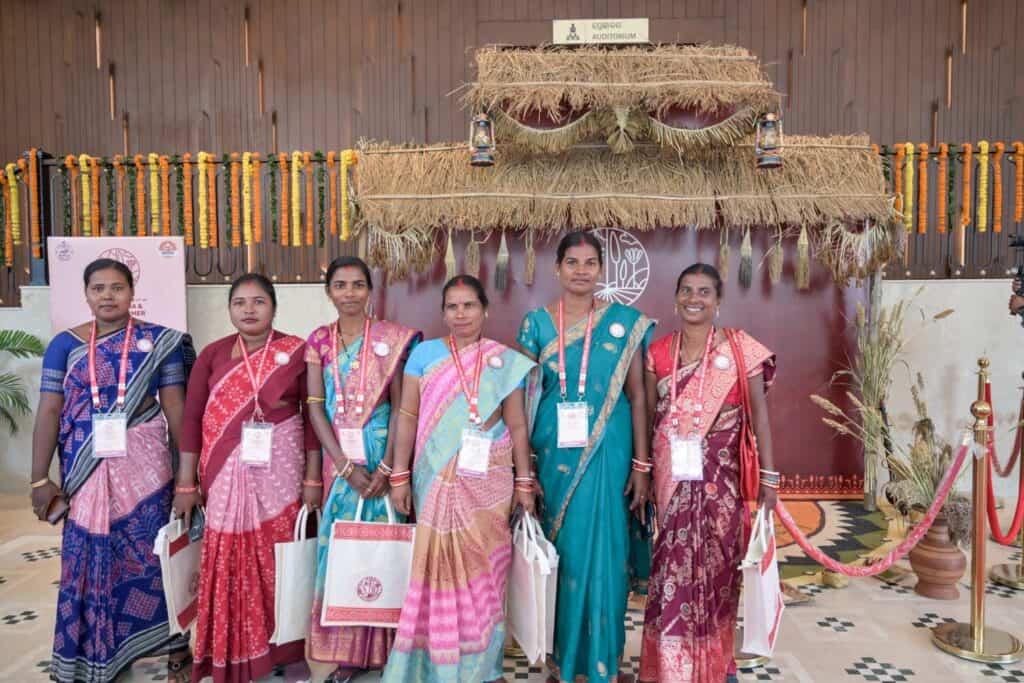
Sessions like “Community Managed Seed System: Strategy for Empowering Women” (hosted by MSSRF) and “Transforming Communities: Women’s Leadership in Action” (hosted by SEWA) showcased inspiring stories from across India — from Odisha’s Gajapati district to Nagaland and Andhra Pradesh — where women-led collectives are reviving traditional crops and building resilient local food systems.
“Agriculture cannot progress without women,” noted Shri Chouhan. “Odisha’s women have moved ahead and are leading from the front.”
These sessions emphasized how women’s knowledge systems are central to biodiversity conservation, sustainable farming, and equitable food policies.
Technical Sessions: Advancing Research, Policy, and Practice
The two-day event featured eight high-impact technical sessions designed to bridge science, policy, and grassroots practice. Some key sessions included:
1. MAHARISHI – Harnessing the Value Chain Potential of Millets and Ancient Grains (Hosted by IIMR)
This session explored the Bhubaneswar Declaration on Millets, a policy roadmap that aims to mainstream millets into global food systems. Discussions by experts like Dr. Arabinda Padhee, Dr. Sunita Narain, and Dr. Yvonne Pinto emphasized millets’ role in addressing climate challenges, improving nutrition outcomes, and enhancing farmer livelihoods.
2. Community Managed Seed Systems (MSSRF)
This panel shed light on the pivotal role of women-led community seed banks, drawing examples from Odisha, Tamil Nadu, and Andhra Pradesh. It highlighted how these systems preserve traditional varieties while ensuring local food sovereignty.
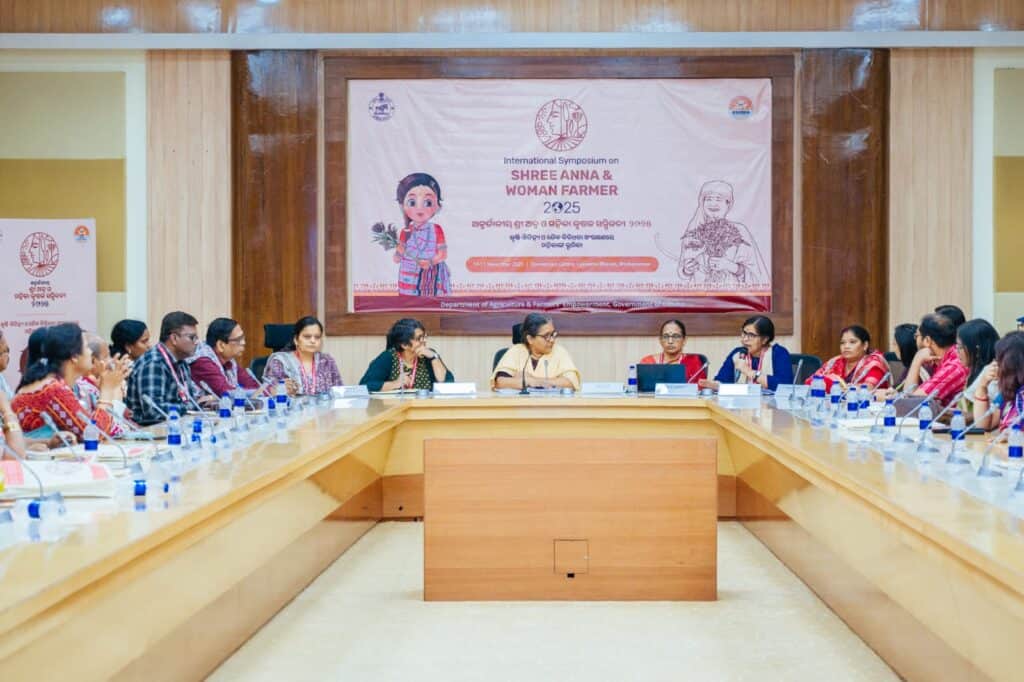
3. Gender-Inclusive Policy Making (IFPRI)
Experts from IFPRI, SEWA, UN Women, and NITI Aayog discussed pathways for inclusive extension systems and the importance of integrating women’s traditional knowledge in policy frameworks.
4. Sustainable Food Systems for a Healthier Tomorrow (Dept. of Health & Family Welfare, Odisha)
This vibrant session connected agriculture and public health, featuring insights from AIIMS Bhubaneswar, ICRISAT, and ICMR-NIN on millets’ role in combating malnutrition and non-communicable diseases. The Department of Health and Family Welfare also felicitated ASHA workers for promoting millet-based diets.
5. Conservation of Agricultural Heritage (FAO)
Hosted by the FAO, this session highlighted Odisha’s efforts to document and protect agricultural heritage sites like Gandhamardan and Mahendragiri Hills, led by grassroots women custodians such as Dr. Raimati Ghiuria.
6. Mainstreaming Millets: From Procurement to Nutrition Security (DA&FP, Odisha)
This discussion detailed Odisha’s pioneering model of millet procurement through Minimum Support Price (MSP) and its integration into PDS, ICDS, and school meals, offering a roadmap for other states to follow.
Koraput Shines Bright: Best Performing District under Shree Anna Abhiyan 2025
A moment of immense pride came when Koraput District was felicitated as the Best Performing District under Shree Anna Abhiyan–2025. The award was presented to Sri Manoj Satyawan Mahajan, Collector and District Magistrate, Koraput, recognizing the district’s exceptional performance in millet area expansion, productivity, procurement, enterprise development, and innovation.
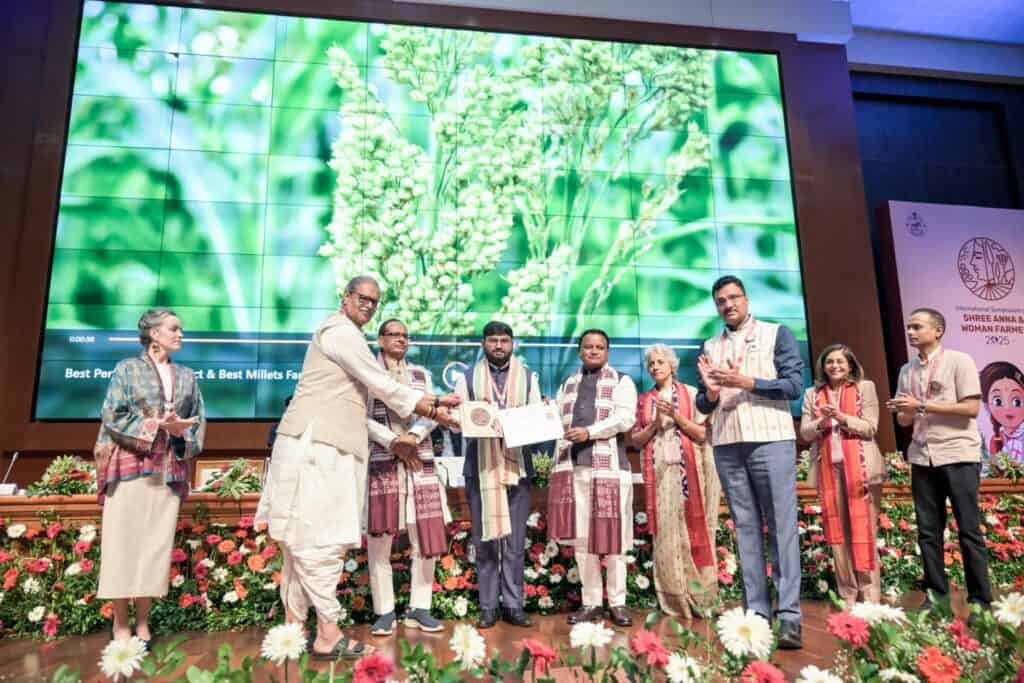
This recognition stands as a tribute to the collective efforts of farmers, extension officers, civil society organizations, and the district administration — all working in harmony to make Koraput a model millet district.
“This achievement reflects the power of collaboration,” remarked an official from the Department of Agriculture. “Koraput’s success is a living example of how grassroots efforts can transform local nutrition and economy.”
A Movement Beyond Borders
The International Symposium on Shree Anna & Woman Farmer 2025 was more than just an event — it was a celebration of resilience, tradition, and innovation. It showcased how Odisha’s inclusive approach — combining research, policy, and community leadership — is shaping the future of sustainable agriculture not only for India but for the world.
As the curtains fell on Mandia Dibasa 2025, one message echoed across the halls of Lok Seva Bhawan:
“Millets are more than grains — they are the seeds of our collective future.”
Odisha’s journey under the Shree Anna Abhiyan continues to inspire states and nations alike. From pioneering millet procurement at MSP to empowering women through seed sovereignty, the state has transformed what began as an agricultural mission into a people’s movement for nutrition, livelihoods, and climate resilience.
With visionary leadership, dedicated farmers, and strong institutional support, the story of Shree Anna is no longer just Odisha’s pride — it’s India’s promise to the world.
Author: Tapas Chandra Roy, A Certified Farm Advisor on
Millets, ‘Promoting Millets from Farm to Plate’, and the Author of the book,” Millet Business Ideas-Empowering Millet Startups”. In a mission to take the forgotten grains- Millets to Millions. To remain updated on my blogs on Millets, please subscribe to my newsletter, and for any queries, please feel free to write to tapas@milletadvisor.com

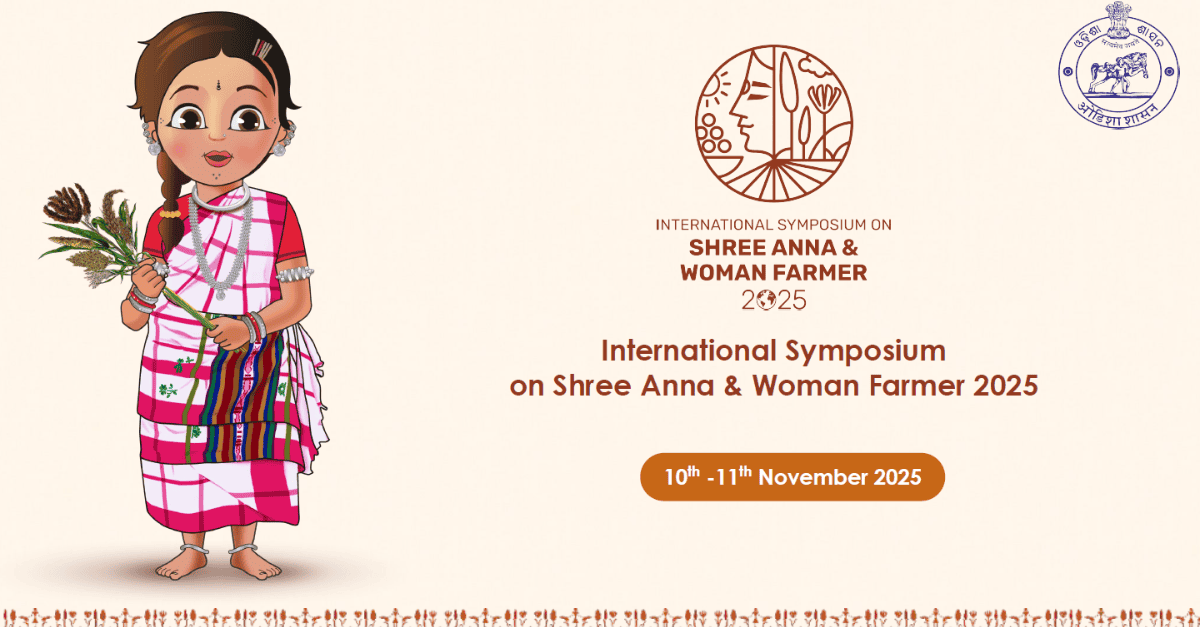
Very good informative